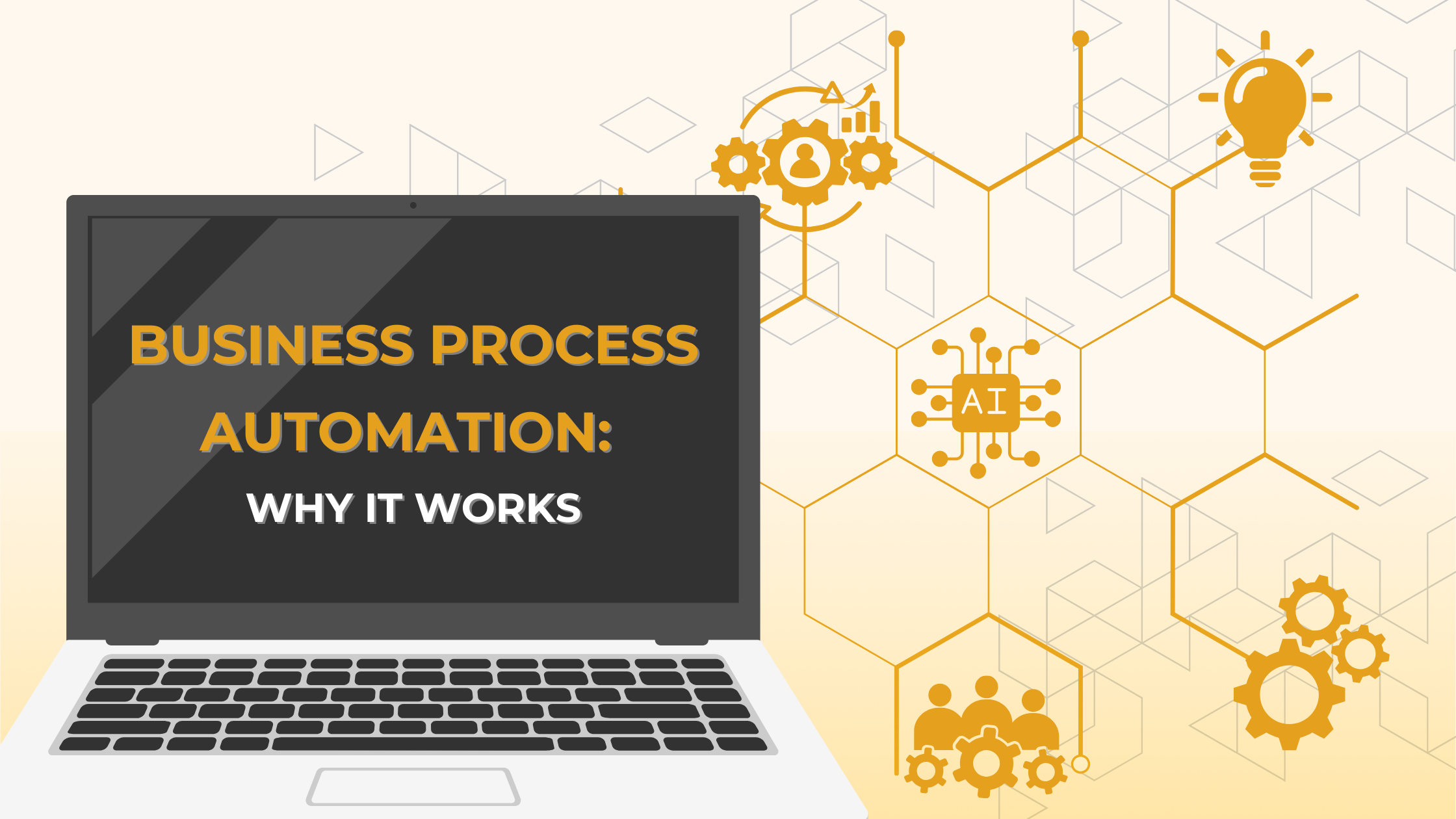Why Process Automation is the Backbone of Modern Operations
startups Entrepreneurs

Modern businesses have transformed the definition of success. Now, we're no longer confined to just offering innovative products or top-notch services, modern business encompasses the ability to operate efficiently, adapt swiftly to market changes, and leverage technology to stay ahead of the curve.
Companies like Amazon with its sophisticated logistics system, Netflix with its personalized content delivery, and Tesla with its automated production lines exemplify modern business practices that are driven by process efficiency and technological advancement.
Given these businesses, staying competitive requires more than just offering a great product or service. Many modern businesses have been employing a method called process automation to gain leverage, transforming the way businesses function from the ground up. Ever heard of it?
Process automation is the use of technology to perform recurring tasks or processes in a business where manual effort can be replaced. It enables companies to streamline workflows, reduce human error, increase productivity, and free up employees to focus on more strategic, high-value activities. From managing simple tasks like data entry to overseeing complex operations like supply chain management, process automation is reshaping industries across the board.
Well, doesn't that sound the same as workflow automation? Aren't they the same? To answer that, no they're not. While these terms are often used interchangeably, they represent distinct concepts.
Process vs. Workflow Automation
Workflow automation focuses on the orchestration of tasks within a specific workflow, ensuring that each step is completed in a timely and efficient manner. It deals with the "flow" of tasks from one stage to the next, often involving multiple team members or departments.
Process automation, however, is broader in scope. It involves the automation of entire processes, which may include multiple workflows, to create a cohesive system that drives efficiency and performance across the entire organization.
In this blog, we'll dive into the key components that make up a successful automation strategy, explore the latest technology solutions for automation, and share real-world case studies that highlight both the triumphs and challenges of adopting process automation in various industries.
Key Components of a Successful Automation Strategy
Implementing process automation is a transformative step for any business, but its success hinges on several critical components. To maximize the benefits of automation and ensure a seamless transition, it’s important to carefully plan and execute each phase of the strategy.
1. Clear Objectives
The foundation of a successful automation strategy begins with defining clear objectives. Without well-defined goals, automation efforts can become disjointed and fail to deliver the desired results.
Ask yourself: "What are we trying to achieve with automation?"
Whether it's reducing operational errors, speeding up production, cutting costs, or improving customer satisfaction, having specific and measurable objectives will guide your decision-making process and help you choose the right tools and technologies.
For example, if your primary goal is to reduce human error in data entry, you'll want to focus on automating repetitive tasks that are prone to mistakes, such as manual data input in CRM systems.
2. Comprehensive Process Mapping
Before implementing any automation, it's essential to have a detailed understanding of your existing processes. This phase involves identifying every task within a process, determining who is responsible for each step, and pinpointing potential bottlenecks that could hinder automation.
When you thoroughly mapping out your processes, you will gain valuable insights into areas that can be improved or streamlined through automation. If a business is experiencing delays in its order fulfillment process, process mapping might reveal that manual inventory checks are the bottleneck, which could be resolved by automating inventory management.
3. Scalability and Flexibility
As your business grows, your automation solutions should be able to scale with it. This means choosing technologies and platforms that can handle increased workloads and integrate with additional tools as needed. Additionally, flexibility is key to adapting to changing business needs and technological advancements.
For example, if your company expands into new markets, your automation tools should be able to accommodate different languages, currencies, or regulations.
4. Employee Training and Involvement
One of the most overlooked aspects of automation is the role of employees in its success. While automation can significantly improve efficiency, it can also lead to resistance if employees feel threatened or unprepared for the changes.
Employee training and involvement are crucial for minimizing resistance and ensuring a smooth implementation process. Involving employees in the planning and execution phases helps you can foster a sense of ownership and confidence. Offering workshops or online courses on using new software can empower employees to embrace automation rather than fear it.
5. Continuous Monitoring and Optimization
Automation is not a one-time task. Once your automation processes are in place, regular monitoring is essential to ensure they are functioning as intended and delivering the expected results. This involves tracking key performance indicators (KPIs) such as productivity rates, error reductions, and cost savings.
Additionally, as new challenges and opportunities arise, your automation strategy should be flexible enough to adapt. Continuous optimization might include tweaking existing processes, integrating new tools, or even re-evaluating your original objectives. A company that initially automated its customer support may later decide to integrate AI-powered chatbots to further enhance response times and customer satisfaction.
Technology Solutions for Automation
Automation technology not only helps organizations reduce manual effort but also enables them to optimize processes, improve accuracy, and deliver better customer experiences.
1. Robotic Process Automation (RPA)
Robotic Process Automation (RPA) is one of the most widely adopted automation technologies. RPA utilizes software robots (or "bots") to perform repetitive, rule-based tasks that are typically carried out by humans. These bots can interact with various applications and systems just like a human would, which allows businesses to automate processes such as data entry, invoice processing, and customer support. By implementing RPA, organizations can significantly reduce processing time, minimize errors, and free up employees to focus on more strategic tasks.
2. Workflow Automation Tools
Workflow automation tools are designed to help organizations automate their business processes by creating structured workflows that define how tasks are completed and how information flows between different departments. These tools often include features such as task assignments, notifications, and approvals, making it easy to manage complex processes.
Popular workflow automation tools include Zapier, Microsoft Power Automate, and Asana. By using these tools, companies can enhance collaboration, improve accountability, and ensure consistency across their operations.
3. Cloud-Based Solutions
Cloud-based technology solutions offer significant advantages for automation by providing scalable, flexible, and accessible platforms for managing operations. Cloud services, such as Software as a Service (SaaS), enable businesses to automate various functions, from customer relationship management (CRM) to project management.
By adopting cloud-based solutions, organizations can benefit from real-time data access, seamless integration with other applications, and reduced infrastructure costs. JLabs leverages cloud-based technologies to ensure that our clients' automation solutions are adaptable and can grow alongside their businesses.
4. Artificial Intelligence and Machine Learning
Artificial Intelligence (AI) and Machine Learning (ML) are transformative technologies that enable businesses to automate complex tasks and make data-driven decisions. AI-powered tools can analyze large volumes of data, identify patterns, and generate insights, which can inform automation strategies.
For example, machine learning algorithms can predict customer behavior and automate personalized marketing campaigns, while AI chatbots can handle customer inquiries in real-time, improving the overall customer experience. Integrating AI and ML into automation processes can drive efficiency and help organizations stay competitive in the market.
5. Business Process Modernization
At JLabs, we specialize in Business Process Modernization, a comprehensive service that focuses on transforming your disjointed and offline processes into cohesive, efficient systems that enhance productivity and profitability. Our approach to automation involves integrating digital technologies into your operations to manage data effectively, streamline workflows, and eliminate inefficiencies.
How JLabs Can Help:
- Tailored Solutions: We understand that every business is unique. Our team collaborates with you to analyze your specific needs and design customized automation solutions that align with your objectives.
- Expertise in Supported Technologies: We utilize a carefully selected set of technologies, including React, NestJS, Laravel, and AWS, to ensure high-quality automation solutions with quick turnaround times.
- Phased Approach: Our three-phase process—System Design, Business Modernization, and Growth Support—ensures a smooth transition to automation while providing ongoing assistance as your business evolves.
When you choose JLabs for your business process modernization needs, you can leverage the latest technology solutions to streamline operations, enhance customer satisfaction, and drive growth. Our expertise in automation and commitment to your success will empower your organization to thrive in today's digital landscape.
Business Success and Challenges
Process automation is a powerful tool that can lead to significant improvements in efficiency, accuracy, and customer satisfaction. However, its implementation can also present challenges. Understanding the factors that contribute to business success, as well as the obstacles that can hinder progress, is essential for any organization aiming to thrive in a competitive environment.
Key Drivers of Process Automation Success
- Increased Efficiency and Productivity
- Cost Reduction
- Scalability and Growth
Common Challenges Faced by Businesses
- Resistance to Change
- Integration Issues
- Initial Investment Costs
The rapid evolution of technology means that businesses must adapt or risk falling behind. Process automation is not just a trend; it’s the backbone of modern operations, driving efficiency, reducing costs, and enhancing competitiveness.
At JLabs, we specialize in helping businesses transition from manual, disjointed processes to integrated, automated systems. Whether you’re looking to automate specific tasks or overhaul your entire operational process, we have the expertise to guide you through every step of the journey.
Let’s talk about how JLabs can help you achieve process automation and take your business to the next level!
Subscribe to our newsletter & stay updated.
.png)

.png)